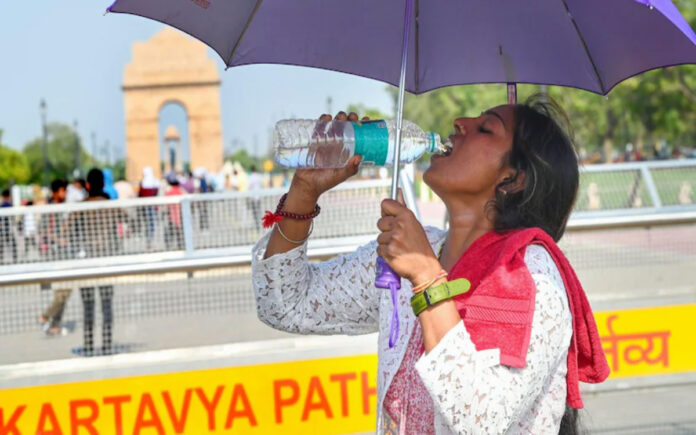New Delhi: Delhi witnessed an unprecedented surge in temperature on Wednesday, reaching a scorching 52.3 degrees Celsius, as per data from the India Meteorological Department (IMD). The Mungeshpur weather office, situated on the outskirts of the national capital, reported this staggering temperature at 2:30 pm.
For the past few days, a severe heatwave alert has been in force for Delhi and several other states in northern and central India. IMD data highlights that temperatures have peaked across multiple districts to record levels.
This remarkable temperature spike comes just a day after Delhi nearly touched the 50-degree Celsius mark at three of its weather stations in outlying areas. Weather offices in Mungeshpur, Narela, and Najafgarh have consistently reported extreme temperatures in recent times. Earlier, Rajasthan’s Churu district had claimed the title of the warmest district of the season, recording a blistering 50.5 degrees Celsius.
Experts point to heatwaves originating from Rajasthan as a significant contributing factor to the capital’s extreme temperatures. Mahesh Palawat, vice-president of Meteorology and Climate Change at Skymet Weather, explains, “In open areas with vacant land, there is increased radiation. Direct sunlight and lack of shade make these regions exceptionally hot.”
Kuldeep Srivastava, the regional head of the IMD, emphasizes, “Parts of Delhi are particularly susceptible to the early arrival of these hot winds, worsening the already severe weather. Areas like Mungeshpur, Narela, and Najafgarh are the first to experience the full force of these hot winds.”
Given the situation, a red alert has been issued in the national capital, cautioning residents to take necessary precautions against the perilous heatwaves. Authorities are advising people to stay indoors, keep hydrated, and avoid unnecessary exposure to the sun during peak hours.
The Centre defines a heatwave over a region “when the actual maximum temperature remains 45 degrees Celsius or more irrespective of the normal maximum temperature.”
According to IMD criteria, a heatwave is declared “if the maximum temperature of a station reaches at least 40 degrees Celsius or more for plains, 37 degrees Celsius or more for coastal stations, and at least 30 degrees Celsius or more for hilly regions” for two or more consecutive days.
Additionally, Delhi is experiencing warm night conditions, which are expected to persist until June 2, as noted by the IMD.



